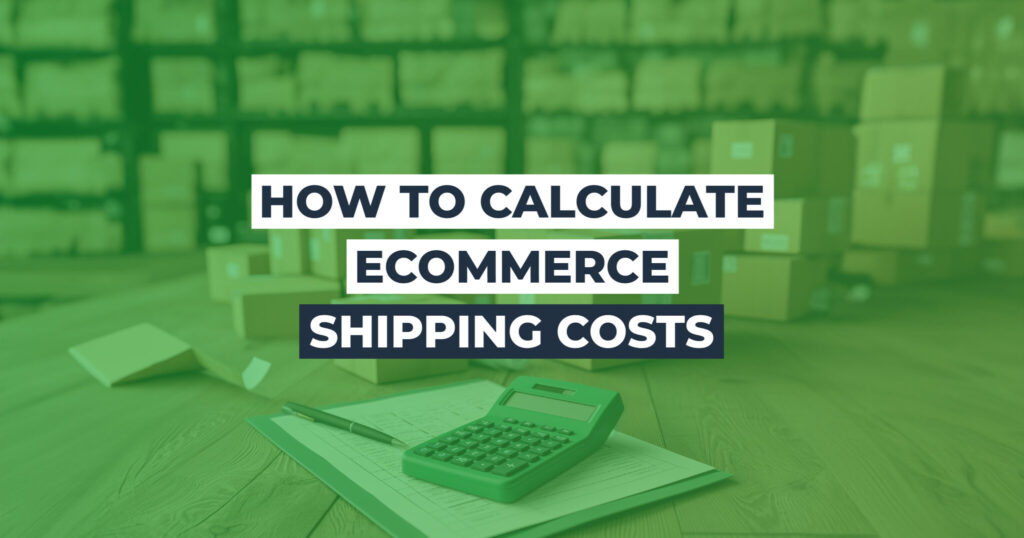We get a lot of questions from ecommerce businesses about shipping costs — questions about how they’re calculated, how our rates compare to what they’re paying now, what kind of discounts they can expect, and how they can reduce their shipping costs. Today we’re going to explore all the factors that go into shipping costs, how to compare them, and why a partnership with a high-volume 3PL will end your struggles once and for all.
Factors That Determine Shipping Cost
The method for calculating shipping costs is pretty simple: you pick a carrier, input the weight and dimensions of the package, where it’s originating, where it’s going, and how fast it needs to get there, and out pops the shipping cost. Let’s look at those variables a little closer.
Shipping Method
Same-day, next-day, two-day, 3-5 day, and 5-7 day shipping all have different rates depending on the carrier, and different criteria for meeting those rates, such as order cut-off times or weight and size limits. Customers expect to see at least one fast shipping option at checkout, and at least one economy method.
Zones
How many shipping zones will the package cross to get from its origination point (your fulfillment center) to its destination (your customer’s address)? Again, that depends on which carrier you choose. Each carrier sets its own zones, usually based on their ability to get to certain ZIP codes. The more zones the shipment crosses, the higher the shipping cost.
Weight
Usually, but not always, the heavier the package the higher the shipping cost. Sometimes a lightweight package that takes up a lot of space can cost more than a heavy but small package.
DIM Weight
Dimensional weight, a.k.a. DIM weight or volumetric weight, is a pricing formula adopted by shipping carriers to charge customers for the volume (cubic inches per pound) their package takes up. There are workarounds but, like an airplane seat with more legroom, the more space you take up, the more you’re going to pay. DIM weight calculators divide the package’s total cubic inches by a DIM factor set by the carrier. And yes, this factor varies — by carrier, by the mode of transportation, and even by customer. The shipping carrier will compare the DIM weight to the package’s actual weight in pounds. The larger of the two numbers becomes the package’s billable weight.
Value
How much are the package’s contents worth? If you’re shipping valuable merchandise, you’ll most likely want to add insurance to the cost of the shipment.
Carrier
Each carrier sets its own shipping rates, and each has its own pricing structure for different shipping methods and package sizes. Some offer flat rates for certain size packages. Ecommerce businesses can negotiate lower rates, often by contracting all their shipments to one carrier. The more packages you ship, the more negotiating power you have. The question becomes, how can you offer your customers flexibility and ensure you’re getting the best rates if you’re only working with one carrier?
Extras
Once you’ve input all the factors and arrived at a base rate, then you have to add on any surcharges, such as fuel surcharges and peak season surcharges. If your package is extra heavy, oversized, or requires extra handling, there’s a surcharge for that. In many states, there’s a tax on shipping (and of course they’re all calculated differently), in addition to sales tax. International shipments incur extra charges like value-added tax, duties and import fees.
Ecommerce businesses also need to account for shipping costs that aren’t attached to the original order. These include the cost of shipping returns, reshipments of lost or damaged orders, and stockouts that may require splitting an order into two shipments. By most calculations, 20 – 30% of ecommerce orders are returned, so these are not “unexpected” costs. Including them in your overall shipping budget makes them easier to manage.
Once you know all the variables, you can use the shipping carrier’s calculator to arrive at the final cost.
Using Shipping Cost Calculators
Each shipping carrier has its own shipping cost calculator that does the math for you, as long as you know the weight, dimensions and delivery address. If you’re only working with one carrier, you can integrate your order management software with their shipping system to print shipping labels, order pickups, track orders and manage payments.
Using shipping calculators is easy If you’re only shipping one package because you have plenty of time to check multiple carriers and get the best rate. But what if you want to compare costs before picking a carrier?
Using a Shipping Software Platform
The problem with shipping carrier calculators is that they take time. Since every ecommerce order is different, each shipping carrier has different shipping methods and different rates, and those rates are changing constantly, it’s not humanly possible to compare all the options when you’re trying to manage shipping costs for hundreds (or thousands) of orders.
There are software programs that can do this for you, such as Shippo, EasyShip, or Parcel Monkey. But you’re still going to have to measure and weigh each package, unless you find some way to automate this process and input the data. Most importantly, you’re still not going to have much negotiating power until your order volume hits the big time. Until then, the best way to ensure you’re getting the best rates is to work with a third-party logistics and fulfillment provider.
Using a 3PL for Fulfillment and Shipping
A 3PL like ShipMonk ships tens of thousands of orders per day out of 12 fulfillment centers scattered across the country and around the world. The advantages of working with a 3PL are hard to beat.
Leverage – Because we’re fulfilling orders for hundreds of ecommerce businesses every day, we work with all the major shipping carriers and can negotiate much lower rates than any ecommerce business could get on their own. This means our ecommerce merchants can offer their customers more shipping options, including affordable free shipping.
Flexibility – You’re not stuck with one carrier. Our Virtual Carrier Network automatically sources the best carrier and shipping method for each individual shipment based on price, reliability, and availability.
Technology – A tech-forward 3PL like ShipMonk handles all the tech integrations, and automates the time-consuming tasks associated with shipping. Packages are automatically weighed, measured, and routed, based on your parameters and the shipping method your customers select. The carrier is automatically notified. Meanwhile, you can track orders and manage inventory from our cloud-based, industry-leading 3PL software platform.
Locations – ShipMonk operates numerous 1st-party fulfillment centers in the US alone, plus international fulfillment centers in Mexico, the UK, Europe and Canada. This means you can distribute inventory across multiple locations to reduce shipping costs and delivery times. Because of our huge footprint, you can offer your customers affordable 2-day shipping to anywhere in the continental US.
Transparency – Many 3PLs disguise actual shipping costs by charging their ecommerce merchants a flat fee for fulfillment and shipping. At ShipMonk, our ecommerce clients are constantly telling us that they love how transparent our billing system is. Until they switched to ShipMonk, they never knew exactly how much they were paying for shipping.
How Much Should You Charge for Shipping
Calculating shipping costs and deciding how much to charge your customers for shipping are two very different things, but you can’t do one without the other. Once you know what your actual shipping costs are, you can adjust your product pricing and/or shipping charges to cover the cost. To do so, you’ll need to know two important numbers:
1. Average order value
2. Average shipping cost per order
Next, you’ll need to decide how much of the shipping cost your margins can absorb, and how much you want your customers to bear. Keep in mind that you don’t need to make this calculation for each and every order. You’re merely trying to arrive at a happy point where you’re not losing customers or going bankrupt because of unexpected shipping costs. Then you should periodically revisit these calculations to make sure you stay in that happy place.
Sure, you can track all of this yourself, but working with ShipMonk can put this data at your fingertips. From our centralized order and inventory management system, you can drill into the details, sort and filter all you like, and create your own customized reports.
Need We Say More?
The bottom line is that calculating shipping costs is easy if you have the right tools, but it’s not going to tell you everything. You’ll still want to make sure you’re getting the best rates and that your business can afford the fast or free shipping methods that your customers demand. A 3PL can help you control shipping expenses by leveraging volume discounts, offering flexibility with carriers and shipping methods, and greatly reducing your workload. Read on for 7 Reasons Why ShipMonk is the Smart 3PL Choice, then contact us for a quote or demo. We’re pretty sure we can reduce your shipping costs and stress levels simultaneously.





